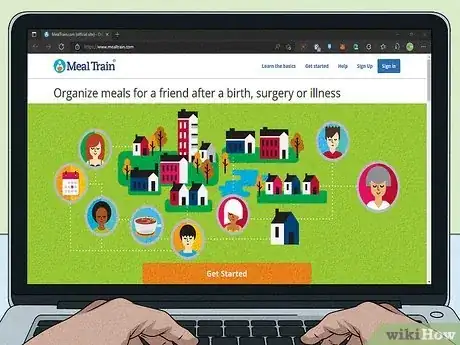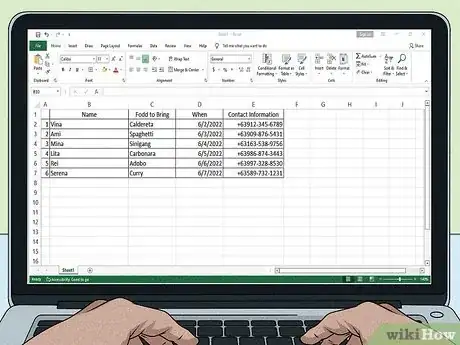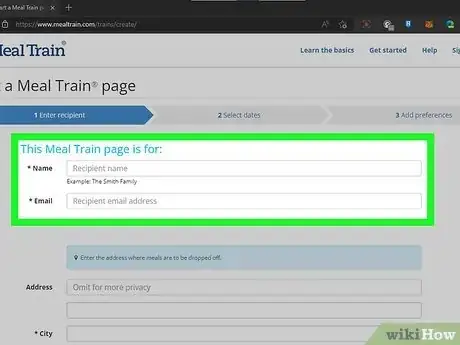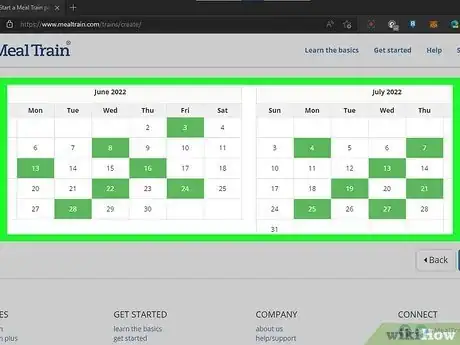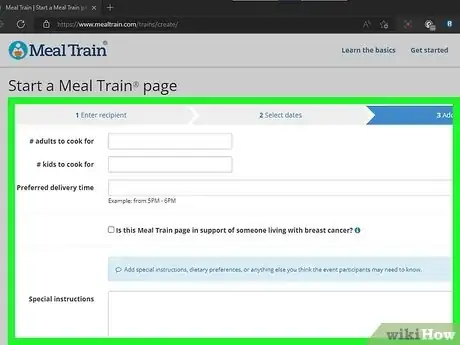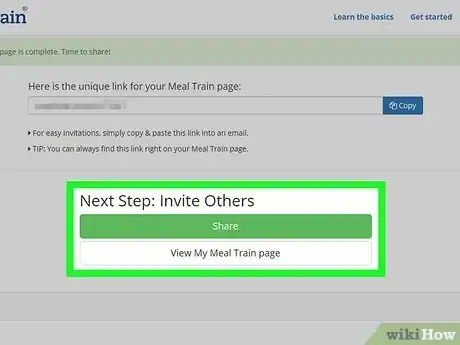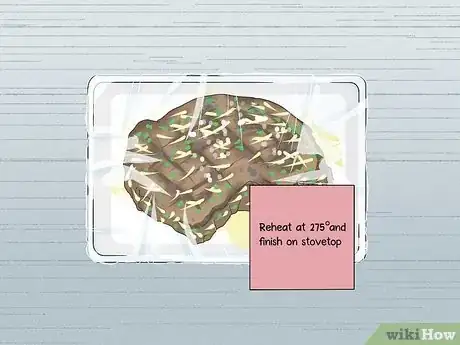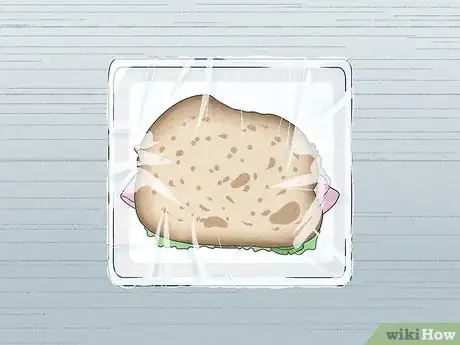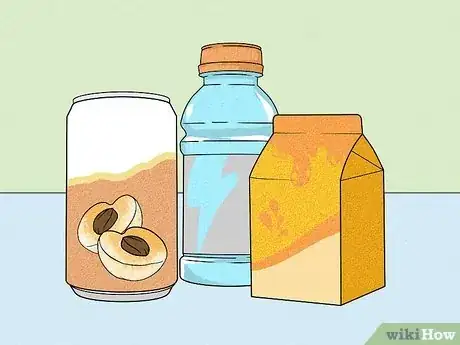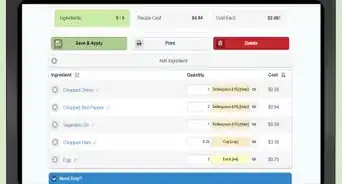This article was co-authored by Marjan Mahallati, RHN, AADP and by wikiHow staff writer, Jessica Gibson. Marjan Mahallati is a Registered Holistic Nutritionist, board certified through the AADP (American Association of Drugless Practitioners) and a graduate of the Canadian School of Natural Nutrition. She is the owner of Let's Nutrition Weight Loss & Nutrition Center in Irvine, California, where she teaches clients how to lose weight and achieve optimal nutrition and health. Marjan has over 15 years of experience in the weight loss industry and has empowered thousands of people to gain their health back and live their healthiest lives.
This article has been viewed 3,352 times.
If you're in charge of organizing meals for a loved one in need, you probably know that there's a lot to keep track of! Fortunately, meal-sharing sites like MealTrain.com make it easy to set up a schedule for dropping off food for someone you care about. In this guide, we'll walk you through the simple setup process, plus give you helpful suggestions for making your meal train experience a success.
Steps
Organizing a Meal Train
-
1Choose an online meal-sharing site that you'd like to use. Scroll through them to find a site with an interface or program that you like. Many offer free programs, but some have inexpensive options that allow you to access more features like signing up for childcare, housework, or running errands. Here are a few websites to check out:[1]
-
2Share a spreadsheet via email or Facebook if you don't want to use a website. It's fine if you don't want to use an online meal-sharing site. Create a spreadsheet where participants can list their names, the date they're bringing food, their contact information, and what they're bringing. Then, email the spreadsheet to friends or share it on your Facebook page.
- You can also create an event on Facebook and share the page that way.
Advertisement -
3Enter the recipient's name and contact information on the site. In general, meal-sharing sites need the recipient's name and email address. Don't forget to include their address and phone number, so people who drop off meals know where to deliver them.[2]
- A phone number also helps if participants want to text or ask questions.
- If you're making a spreadsheet, put the contact info clearly at the top.
-
4Select the dates for the meal train to run. Give your participants lots of options for when they can drop off meals. If someone's recovering from surgery or taking care of a new baby, you may want to request dates for a long period of time. It's completely fine to set up a meal train that lasts for a month or more![3]
- You can also stagger dates, so people don't bring a meal every single day. If you know the recipient would like a break between drop-offs, you could select meal train dates with a few days in between.
-
5Enter the recipient's food preferences. The site will ask you how many adults and kids to provide for—this way there's enough food to go around! You can also make a note of their favorite foods, ingredients to avoid, or restaurants they like. This is where you'll list any allergies, too.[4]
- You can also make a note of when to drop off the food.
- For a spreadsheet, create a column that lists your friend's food preferences.
-
6Add an optional donation fund to raise money for the participant. Some meal-sharing sites offer the option of including a fundraising page. If the person is experiencing financial hardship or people just want to help out with expenses, add a donation page. Donors can electronically contribute any amount they wish![5]
- Note that if you're using the Meal Train website, it deducts 5% from each donation and charges a card processing fee of 2.9% plus $0.30 for each transaction.
- If you'd like to fundraise but you're doing a spreadsheet, include a link to a separate fundraising site like gofundme.com.
-
7Invite friends to participate in the meal train. Sign in to your meal train account to share the meal train. You can usually log in to the account or use a Google or Facebook account. Then, share the unique link for your meal train page.[6]
- Copy and paste the link if you'd like to email participants or share it on social media.
- If you're sharing a spreadsheet, don't forget to make change the settings so anyone with the spreadsheet link can edit it—this way they can note what they're bringing and when.
Following Meal Giving Etiquette
-
1Make heating or serving instructions clear. If you're dropping off a meal that they need to pop in the oven or assemble in some way, write down the instructions. For instance, if you're bringing a casserole, write, "Heat at 350° for 1 hour."[7]
- If you're dropping off a meal with parts, you could list what you're dropping off. For example, write, "Banh mi sandwiches: baguette, pork, fresh veggies, dressing"
- If your friend asks for the recipe, send it in a message or print off a copy for them.
-
2Use dishes that they can keep or recycle. Chances are, the recipient has got a lot going on right now and they probably don't want to keep track of dishes they need to return. Make it easy on them by using containers you don't need returned or package the food in recyclable materials.[8]
- Hit the thrift store for really inexpensive packaging that the recipient can just keep. When you drop off the food, say something like, "You don't have to get these containers back to me—keep them or pass them on."
- If there are containers that you'd like back, label them with your name, so your recipient knows.
-
3Drop off meals that hold or transport well. The meals should be easy for you to deliver to your friend, and they shouldn't be too delicate. Skip the souffle and make a quiche for instance. Consider:[9]
- Cooking casseroles like baked macaroni, lasagna, or enchiladas
- Making soups or stews like chicken noodle soup, butternut squash soup, or mushroom barley stew
- Making chicken pot pie or baking shepherd's pie
- Sandwiches or wraps like fajitas and tortillas, hamburgers, or pulled pork sandwiches
-
4Provide drinks, sides, and desserts to round out the meal. While your recipient will probably be thrilled to have a main dish dropped off, you can really go the extra mile by including some extras. For instance, instead of just giving a pan of lasagna, include a side salad, some sparkling water, and a pint of ice cream.
- Plus, dropping off sides and desserts means there's more to go around, or there may be leftovers.
- Include condiments they might need. For instance, if you're sending them a big salad, include dressing.
References
- ↑ https://youtu.be/lxn8h1uXRHk?t=38
- ↑ https://www.mealtrain.com/trains/create/
- ↑ https://www.mealtrain.com/learn/
- ↑ https://www.mealtrain.com/learn/
- ↑ https://www.mealtrain.com/learn/
- ↑ https://www.mealtrain.com/learn/
- ↑ https://simplebites.net/cooking-for-others-a-guide-to-giving-sympathy-meals/
- ↑ https://simplebites.net/cooking-for-others-a-guide-to-giving-sympathy-meals/
- ↑ https://simplebites.net/cooking-for-others-a-guide-to-giving-sympathy-meals/
